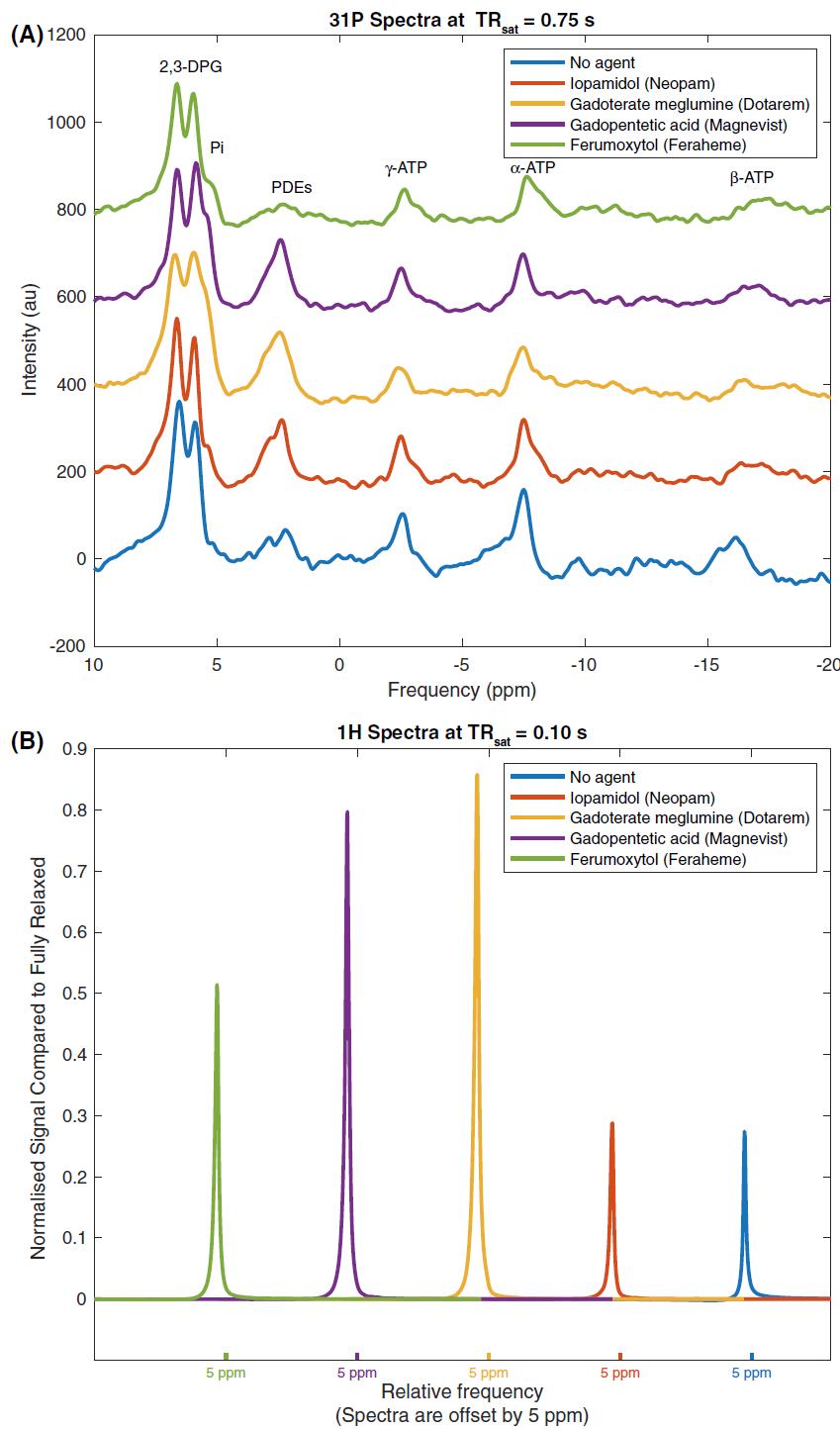Effects of contrast agents on relaxation properties of 31P metabolites, and the differences in skeletal muscle and cardiac energy metabolism between young and seniors
Investigators: Valkovič L. Frollo, I. Ústav merania SAV
Phosphorous MR spectroscopy (31P-MRS) forms a powerful, non-invasive research tool for energy metabolism quantification in the heart and skeletal muscle tissue in diverse patient populations. In this work, we have quantitatively assessed the impact of contrast agents, used in radiology, on the relaxation properties of 31P metabolites. Besides the gadolinium-based contrast agents often used in MR we have investigated also the low osmolar iodinated agent used in CT. Our results show that, unlike conventional proton MRI, 31P-MRS is unconfounded and provides reliable assessments also in patients with prior MRI or CT examination.
We have then investigated aging associated changes in skeletal muscle energy metabolism. Proton (1H) and phosphorous (31P) MRS has been successfully applied for non-invasive assessment of skeletal muscle metabolism. Elderly volunteers had slower phosphocreatine (PCr) recovery after exercise in comparison to the young volunteers, which was strongly associated with the lower concentration of skeletal muscle carnosine.
MRS was also used to detect cardiac changes in cardiac metabolism in patients with heart failure. 31P-MRS demonstrated decreased production of ATP and quantified lowered levels of the transport molecule PCr, simultaneously, carbon (13C) MRS allowed for observation of glucose metabolism in real time. These techniques allow the metabolic deficits in heart failure to be interrogated and thus have a great potential as a future clinical tool.
Fig. 1 Representative spectra acquired from whole human blood before and after addition of contrast agents. (A) 31P-MRS data show that the magnitudes of 2,3-DPG, PDE, γ-ATP, and α-ATP are all unaffected by any contrast agent. (B) 1H-MRS data show that water signal is significantly increased after adding either of the gadolinium contrast agents as well as after ferumoxytol.
Projects: VEGA 2/0003/20 – Magnetic resonance imaging methods for medical diagnostics and materials research. APVV-19-0032 – Development and implementation of a static magnetic field standard based on magnetic resonance
Publications 2020:
- VALKOVIČ, Ladislav – LAU, J.Y.C. – ABDESSELAM, I. – RIDER, O.J. – FROLLO, Ivan – TYLER, D.J. – RODGERS, C.T. – MILLER, J.J.J. Effects of contrast agents on relaxation properties of 31P metabolites. In Magnetic Resonance in Medicine, 2020, ISSN 0740-3194. (3.635-IF2019) https://doi.org/10.1002/mrm.28541. Q1
- KRUMPOLEC, P. – KLEPOCHOVÁ, R. – JUST, I. – TUŠEK JELENC, M. – FROLLO, Ivan – UKROPEC, J. – UKROPCOVÁ, B. – TRATTNIG, S. – KRŠŠÁK, M. – VALKOVIČ, Ladislav. Multinuclear MRS at 7T uncovers exercise driven differences in skeletal muscle energy metabolism between young and seniors. In Frontiers in Physiology, 2020, vol. 11, art. no. 644. ISSN 1664-042X. (3.367-IF2019) Q1
- WATSON, W.D. – MILLER, J.J.J. – LEWIS, A. – NEUBAUER, S. – TYLER, D. – RIDER, O.J. – VALKOVIČ, Ladislav. Use of cardiac magnetic resonance to detect changes in metabolism in heart failure. In Cardiovascular Diagnosis and Therapy, 2020, vol. 10, no. 3, p. 583-597. ISSN 2223-3652. (2.615-IF2019) Q2
 Contacts
Contacts Intranet
Intranet SK
SK
